Are you ready to test your knowledge and satisfy your curiosity about Monsteras, a popular houseplant that’s not as common in the wild?
Here are 14 interesting and even surprising facts that I have come across in learning more about Monsteras:
1) There Are More Than 45 Monstera Varieties
Botanically speaking, Monstera is a genus of 49 species of flowering plants in the arum family, Araceae, native to tropical regions of the Americas (source).
However, as of July 2020 Plants of the World Online recognises 55 accepted taxa (of 49 species and 6 infraspecific names). More about these 6 cultivars at the end!
The best-known representative of the genus is Monstera Deliciosa, but that’s not the only Monstera that you can get as a houseplant.
The most popular monstera varieties include:
- Monstera Deliciosa.
- Monstera Adansonii.
- Monstera Borsigniana.
- Monstera Variegata.
- Monstera Dubia.
- Monstera Obliqua.
Read also: The Ultimate Guide to Monstera Varieties (22 Types) – to find out more about Monstera types and variegated cultivars!
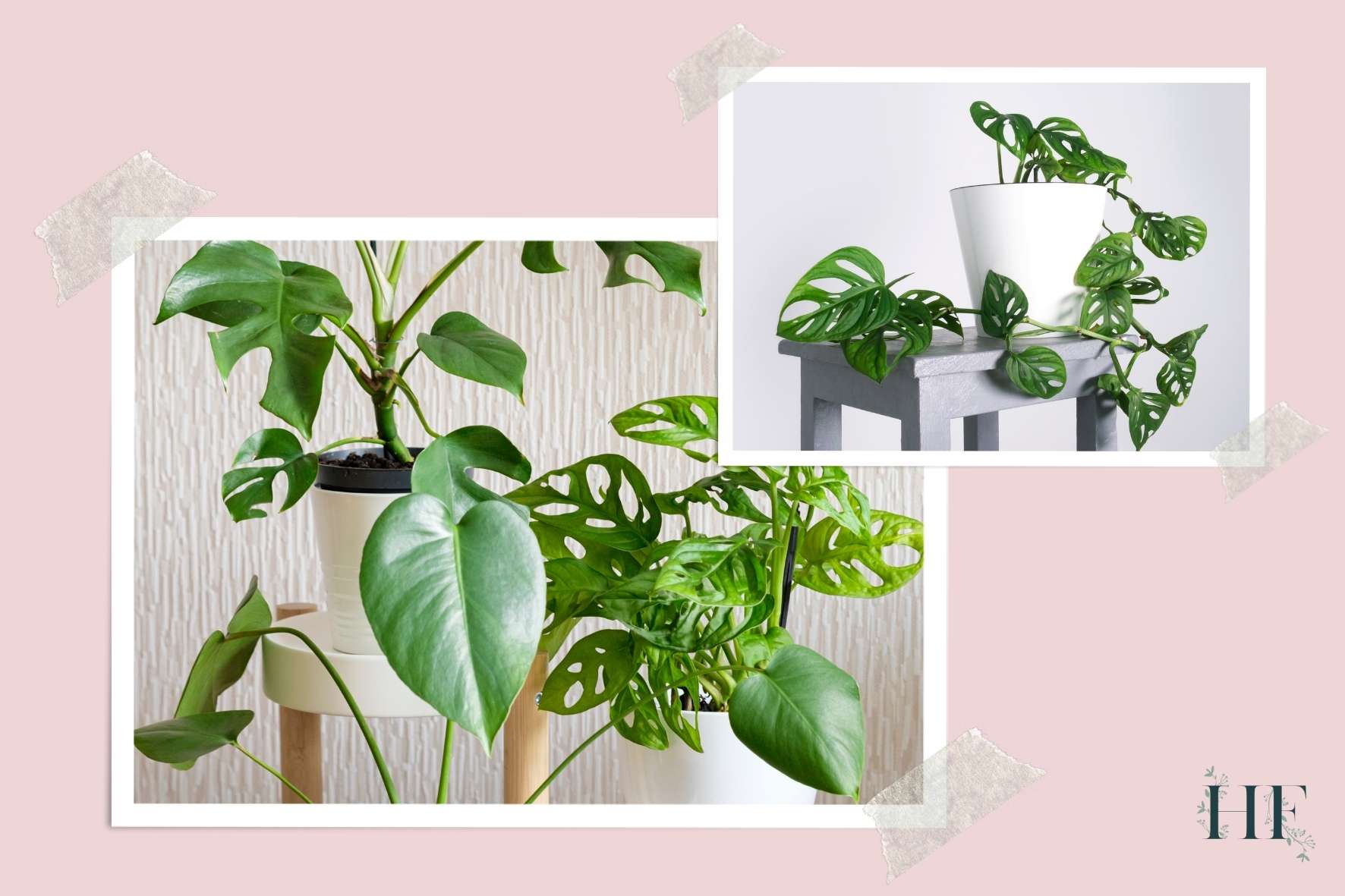
2) Monstera Deliciosa Has Many Common Names
The Monstera genus is named from the Latin word for “monstrous” or “abnormal,” and refers to the unusual leaves with natural holes that these plants have.
The scientific name Monstera Deliciosa translates to “delicious monster,” this name was given in honour of the plant’s sweet fruit and large, broad spreading leaves.
Monstera Deliciosa is also known as the Fruit Salad Plant, Mexican Breadfruit, Ceriman, Swiss Cheese plant, and Windoleaf, amongst others.
Also, it has wrongly been referred to as Split-leaf philodendron. I say wrongly since it’s not a philodendron and the name can cause confusion.
Other common non-English names include Costilla de Adán (ribs of Adam in Spanish), Costela-de-adão (ribs of Adam in Portuguese), Plante gruyère (in French, making reference to the gruyère cheese), Piñanona (in Mexico) and Zampa di leone (lion’s paw in Italian; in coastal regions of Sicily, especially Palermo).
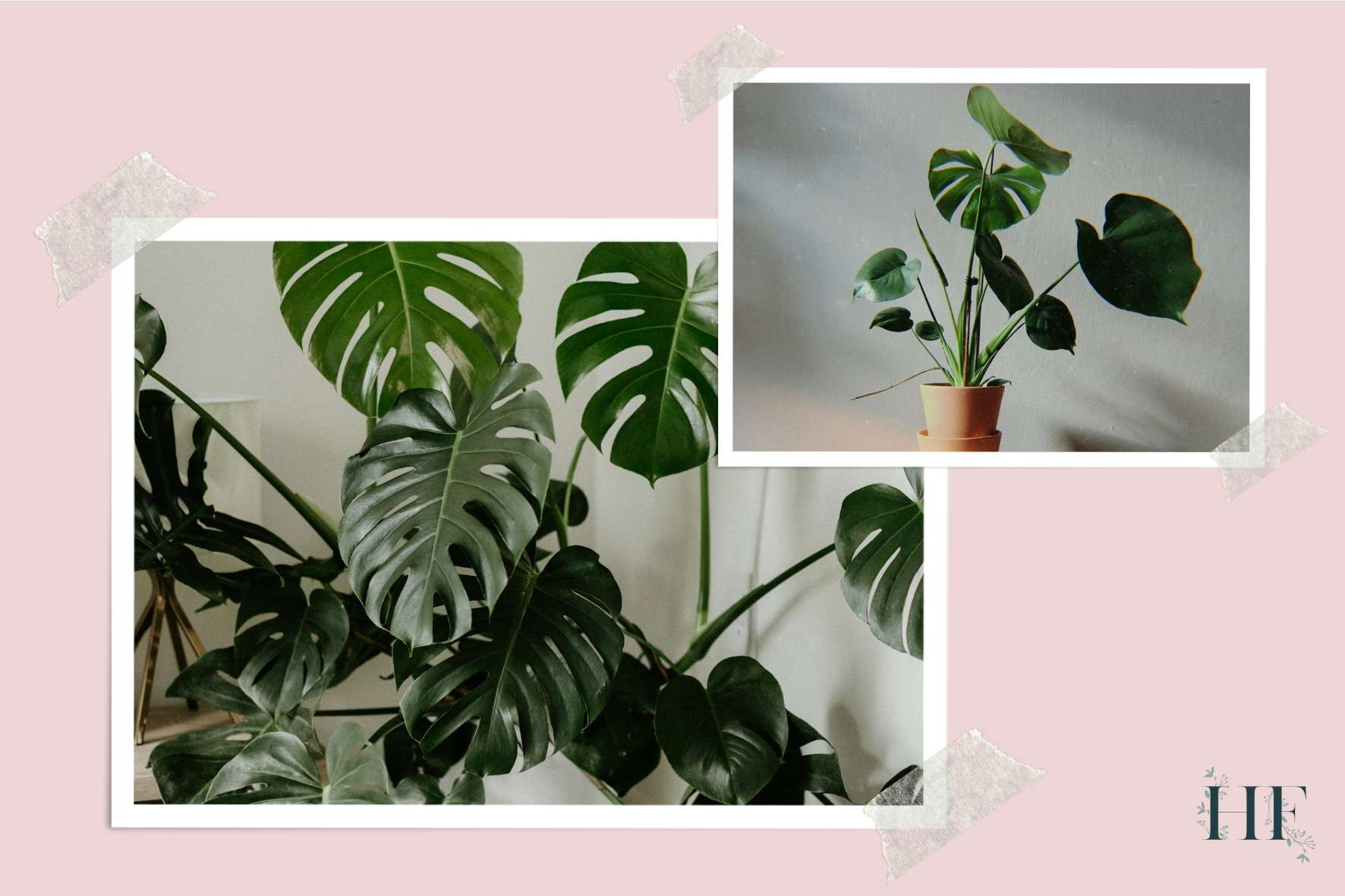
3) Monsteras Can Grow to Heights of 20 metres With Leaves 90cm Long
Monstera Deliciosa is an evergreen vine that can grow to heights of 20 metres (66 ft) in trees, climbing using its aerial roots, which act as hooks over branches. (More about their roots in the next fact).
Their leaves can grow very large too, from 25–90 centimetres (9.8–35.4 in) in length and 15–75 centimetres (5.9–29.5 in) in width. For Monstera Dubia, however, their leaves can grow up to 130 centimetres (51 in) in length.
Although Monstera Deliciosa can grow very tall in nature, it only measures between 2 and 3 m (6.6 and 9.8 ft) when grown indoors (i.e. at home). Hope this is reassuring! I was definitely shocked when I saw the first Monstera Deliciosa in a glasshouse, which mimics its natural habitat (see the photo below).
Read also: Monstera Growth Rate, Life Cycle and Lifespan Facts and Tips.
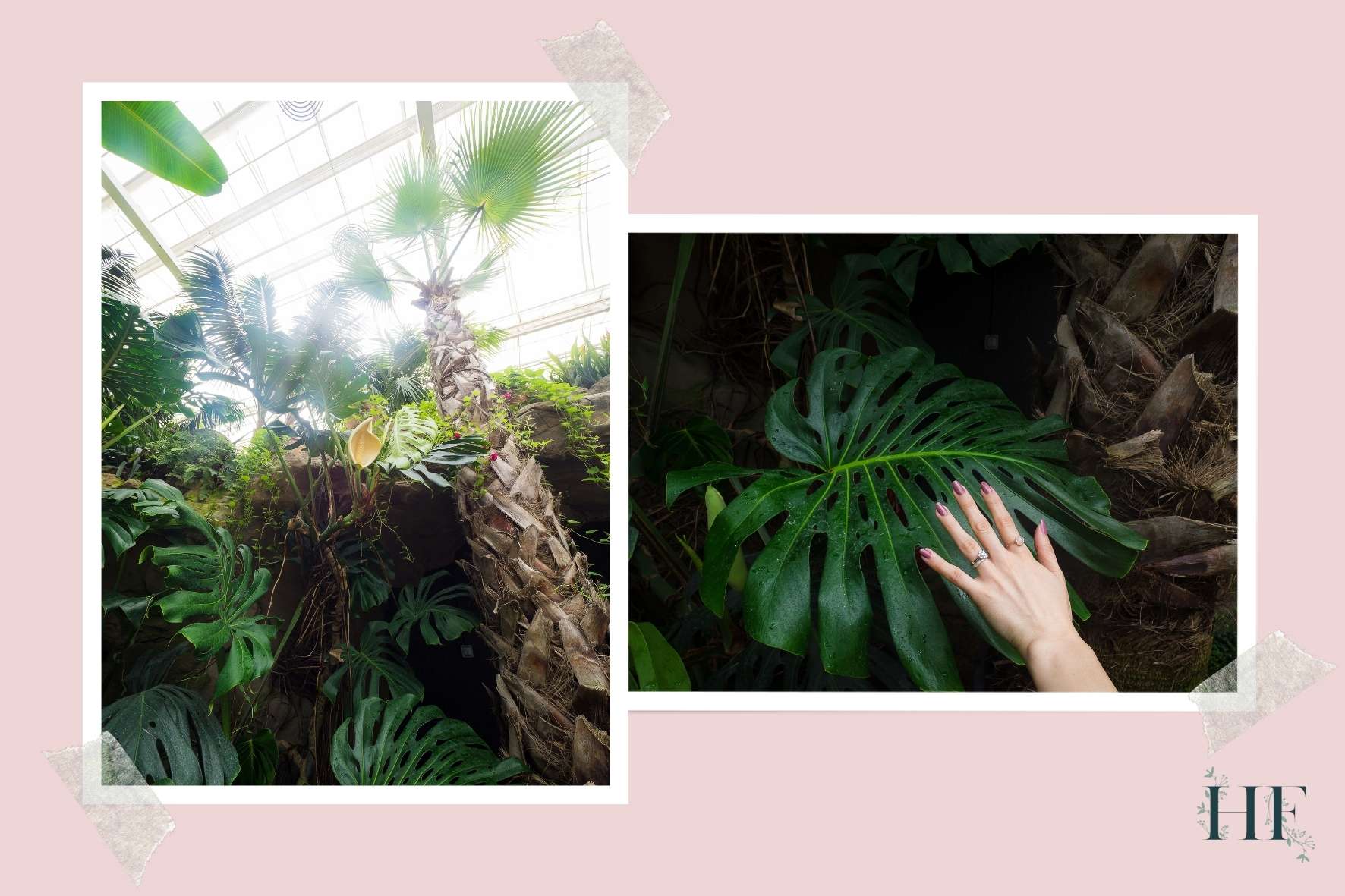
4) Monsteras Have Aerial Roots
Monsteras have aerial roots that act as hooks to climb over branches and rocks. But, these roots will also grow into the soil to help support the plant.
Unlike the Ivy plant, which is incredibly hard to remove and deteriorates the surface they attach themselves to, Monstera’s aerial roots do not harm the surface they attach to.
Read also: Monstera Aerial Roots – 11 Frequent Asked Questions Answered.
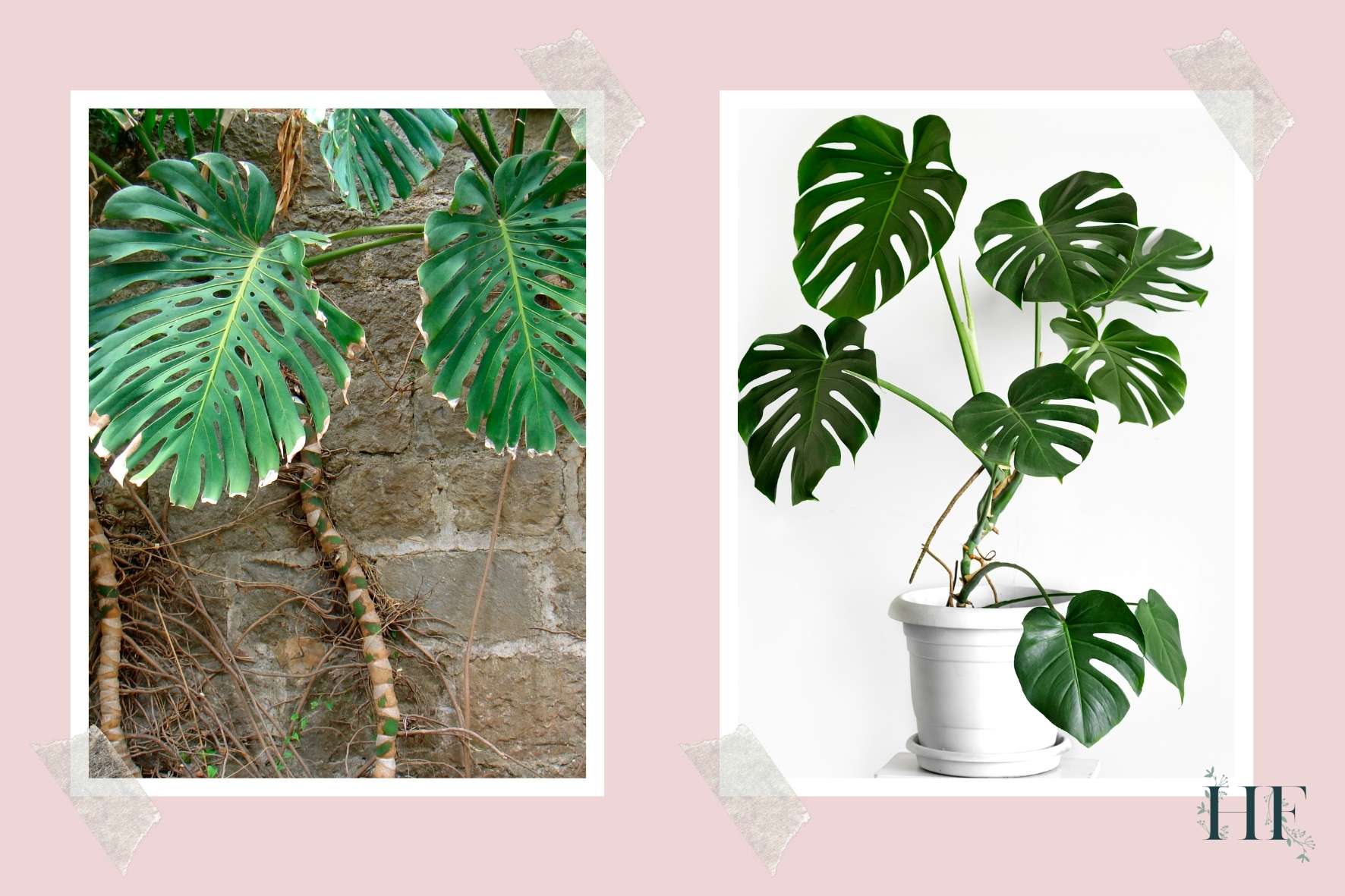
5) Monsteras can Behave Like an Air Plants
Monsteras are hemiepiphyte since their roots go both downwards into the soil and upwards climbing over trees, i.e. they are generally climbing but are also terrestrial.
A hemiepiphyte is a plant that spends part of its life cycle as an epiphyte during a part of its life.
An epiphyte is a plant that lives on another plant. Some epiphytes slowly kill their host plant; we then call them parasites. But both Monsteras and Air Plants don’t harm the host plant, they grow independently from it.
Basically, they grow on the branches or trunks of host trees without parasitizing them, absorbing nutrients from the air and water.
Monsteras will grow out of the soil, like a regular houseplant. But, eventually, they will find a tree trunk and start behaving like an epiphyte, rising from the jungle floor. They use the tree as a ladder to get more sunlight.
Finally, the Monstera ignores its soil base, losing its connection with the earth. This is when they truly live as an air plant, getting their nutrients from the air and water, rather than from the soil. Their aerial roots can always decide to link back to the soil creating new roots that go downwards.
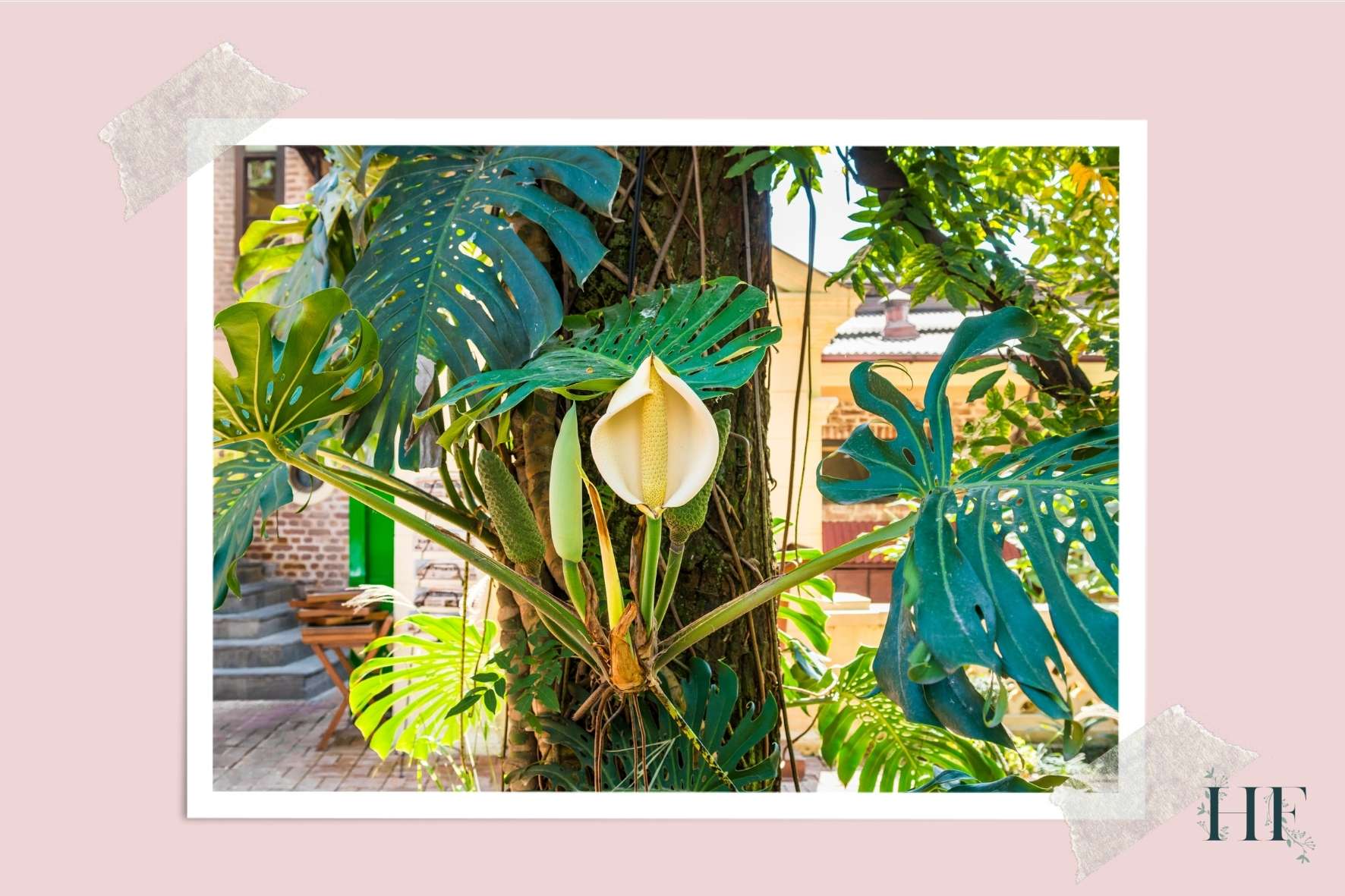
6) The Monstera Leaf Holes Have More Than One Function
As mentioned in Fact #2, Monstera’s strange leaves and their size is what gave the plant its name. The Latin name Monstera means “monstrous” or “abnormal.”
The Monstera Deliciosa leaves are leathery, dark green, and very large. But that’s not all, their leaves will create holes called fenestration (an opening in a surface).
The fenestrated leaves allow for the leaves to spread over a greater area to increase their exposure to sunlight. By doing so, Monsteras use less energy to produce and maintain their leaves.
Also, fenestration minimizes the chances of leaves tearing in high winds and ais to withstand heavy rainfall, letting the elements pass through the holes. Plus, it helps to maximize the amount of rain that’s able to reach the plant’s roots.
Read also: Monstera Leaves and Fenestration Stages [Includes Split Tips].
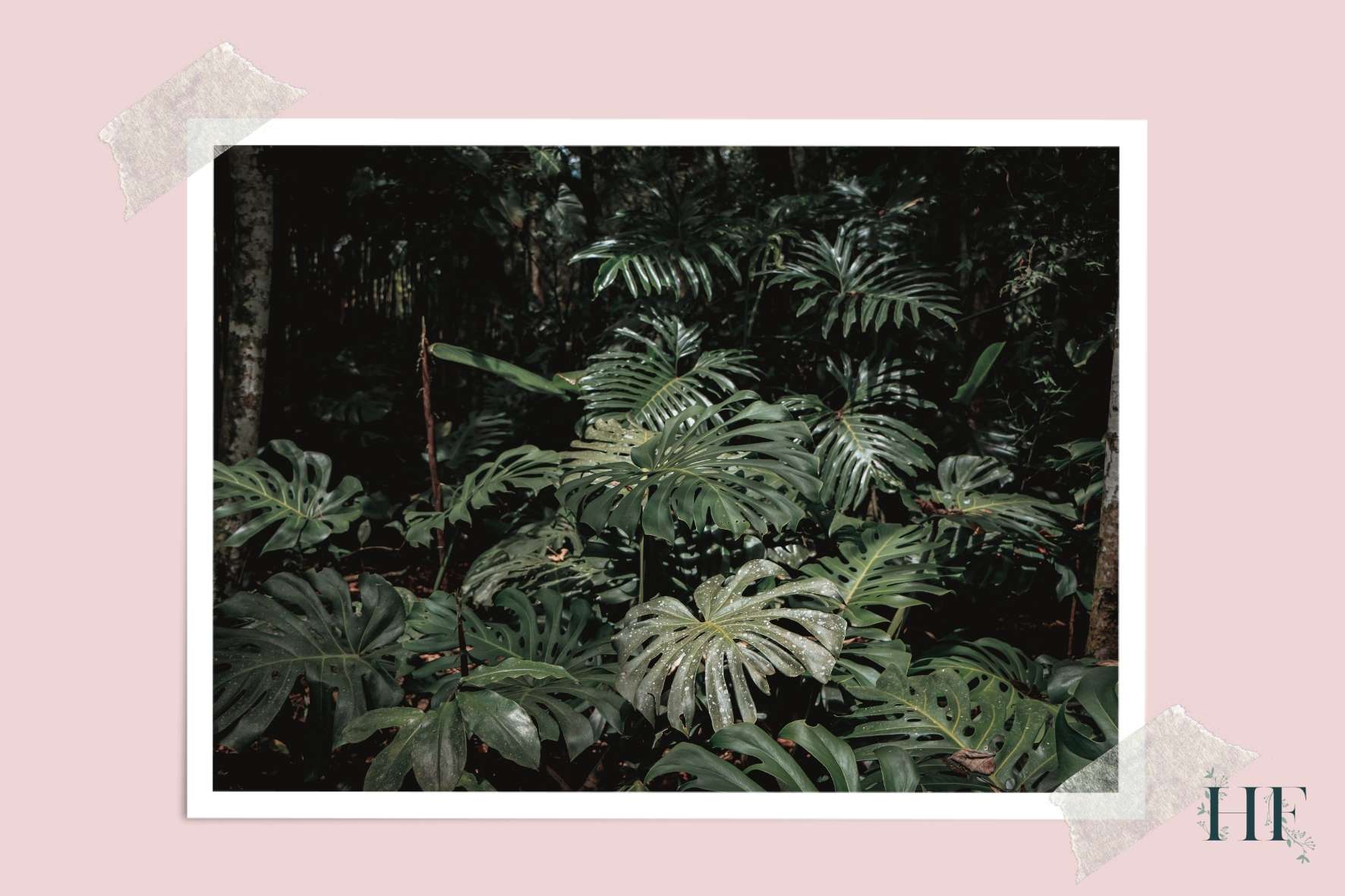
7) Monstera Leaves Cannot Create Extra Holes
Fenestration in Monsteras occurs naturally and all gaps already exist when the plant produces a leaf. This means that a leaf cannot create extra holes once it’s fully grown. During the lifespan of that leaf, it will have the perforations that were already produced when the plant created that new leaf.
The leaves on young plants are smaller and entire with no lobes or holes. As the plant grows, it will produce fenestrate leaves. The older the plant, the more the leaves are covered with large perforations.
These fenestrations that are created earliest in the leaf development end up looking more like splits or slashes whereas those that develop later on in the plant’s life cycle end up looking more like holes.
This trait is found in only one species in Aponogetonaceae, Aponogeton Madagascariensis (Madagascar laceleaf), and a few genera in the Araceae family, particularly Monstera.
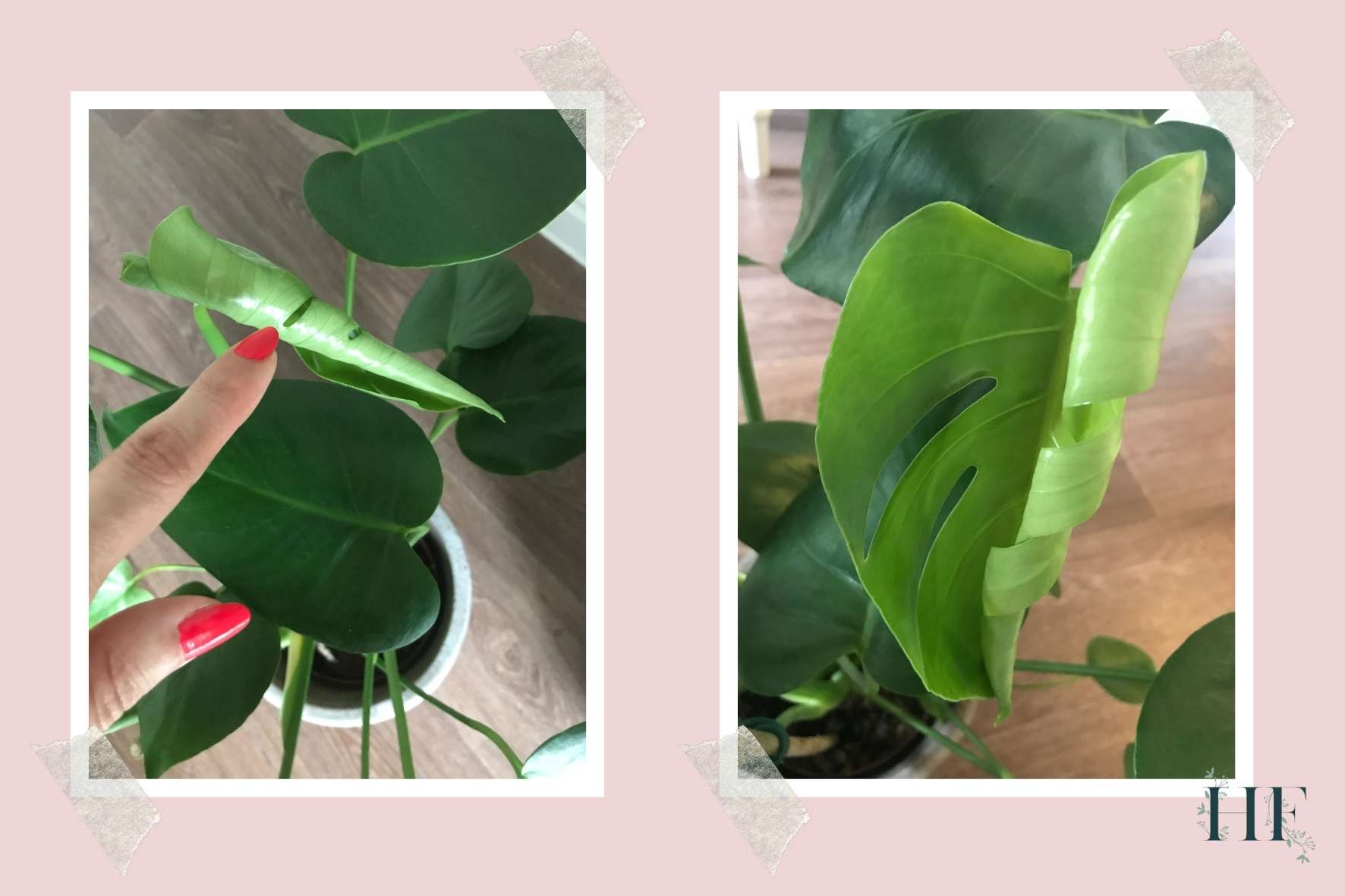
8) Some Monsteras Have Joints
Ever notice your Monstera’s leaves standing from a different angle?
Both Monstera Deliciosa and Monstera Borsigiana have the geniculum. It functions as a “joint” that allows the leaves to rotate in search of more light.
The ruffles that you see right below where the leaf starts are called the geniculum. It is the junction between the leaf blade and the petiole.
Also, it’s possible for a plant to have some leaves with geniculum and others without it.
However, juvenile Monstera plants will not have the geniculum. So if your plant does not have one yet, it simply means that it is not old enough.
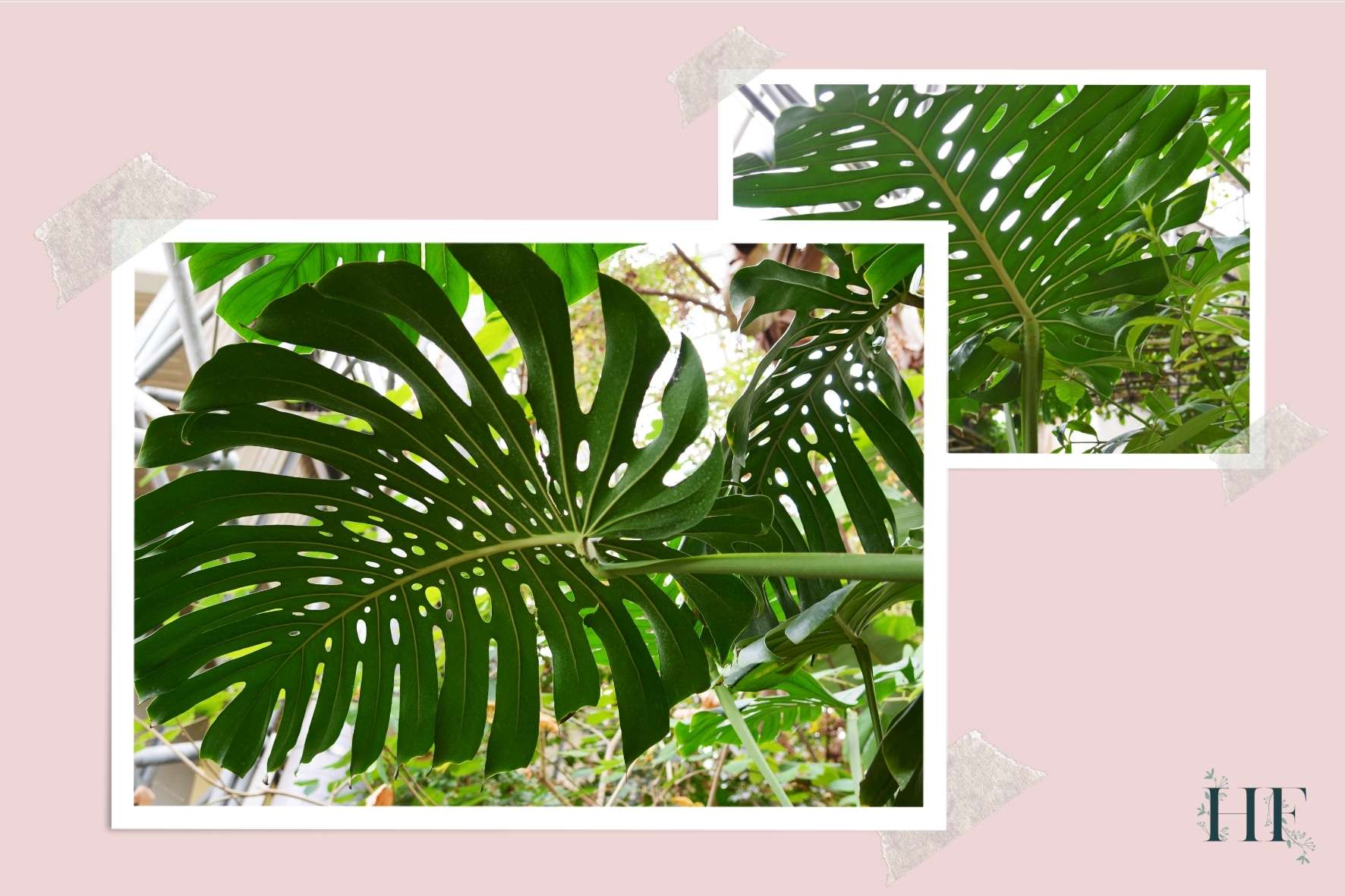
9) Monstera Flowers in Its Natural Habitat
Does the Monstera plant have flowers? And what is a monstera flower time?
Monstera flowers have no specific blooming time or season in the wild. However, a Monstera flowering indoors is rare, they rarely bloom in cultivation.
The Monstera flower is a fleshy erect spadix or spike with tiny blooms surrounded by a boat-shaped spathe. This spathe can be white or yellow and have a white to green flowering spadix, depending on the type of Monstera. The flowers mature upward starting from the base.
The Swiss Cheese Plant (Monstera Deliciosa) flowers in its natural habitat or somewhere that mimics its natural habit very well, like a greenhouse. It’s very rare to see them flower indoors.
Monstera deliciosa flowers are creamy-white and large, about 8 to 12 inches (20 to 38.4 cm) in length.
Most Monstera species will produce a cluster of 2 to 4 spadices. But Monstera obliqua may have up to 8 spadices clusters, and Monstera lechleriana will have only one.
Their flowers get pollinated by beetles, bees, and some flies, and to prevent cross-pollination, the female flower part matures early by a day or two.
Is the Monstera flower edible?
The Monstera flower is not edible, all the parts of the plant are toxic. More about this on the following facts. 😉
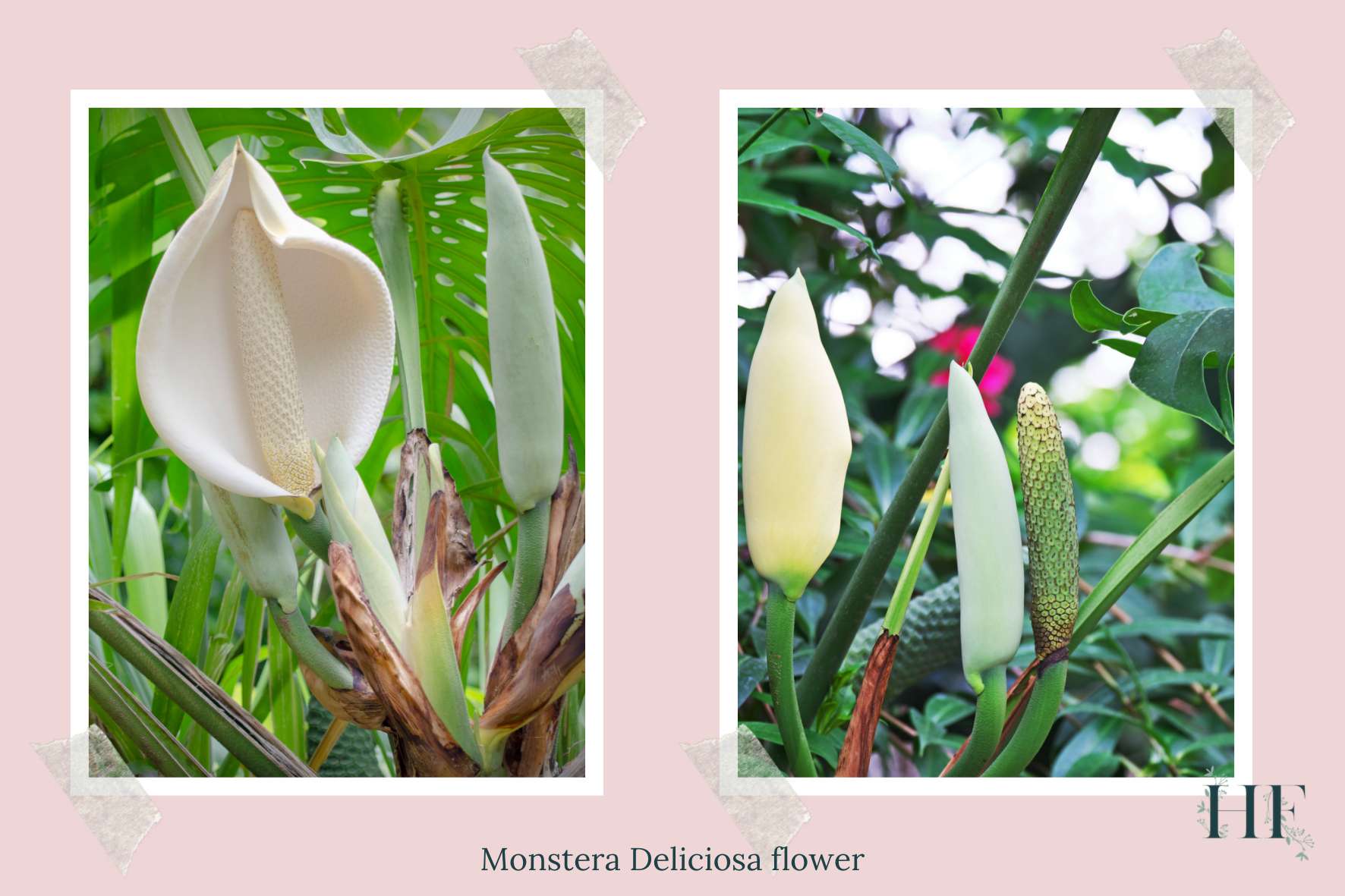
10) Monstera Deliciosa Produces an Edible Fruit
Can you eat Monstera Deliciosa fruit?
Monstera Deliciosa is also cultivated for its edible fruit which tastes like a combination of banana and pineapple. The fruits are considered a delicacy in local markets due to their rarity.
In warm, wet, and humid growing conditions, the Monstera Deliciosa plants will also flower and produce cylindrical, oblong fruits.
Monstera Deliciosa fruits ripen slowly, taking anywhere from 10 to 14 months to mature. They can grow up to 25 cm in length and average 3 to 5 cm in diameter.
The exterior is covered in a protective layer of hexagon-shaped green scales that are inedible. The scales transition from dark to light green, sometimes pale yellow, and as the fruit matures, the scales flake off, revealing ivory to cream-coloured flesh.
The flesh is divided into small kernel-like capsules that can be shaved or hand-pulled off a central, hard, and inedible core (like you would with corn from the cob).
Monstera Deliciosa fruits must be ripe before consumption. They are a source of potassium and vitamin C.
While these plants will flower and produce fruit in a greenhouse, they are unlikely to flower and produce fruit as a houseplant.
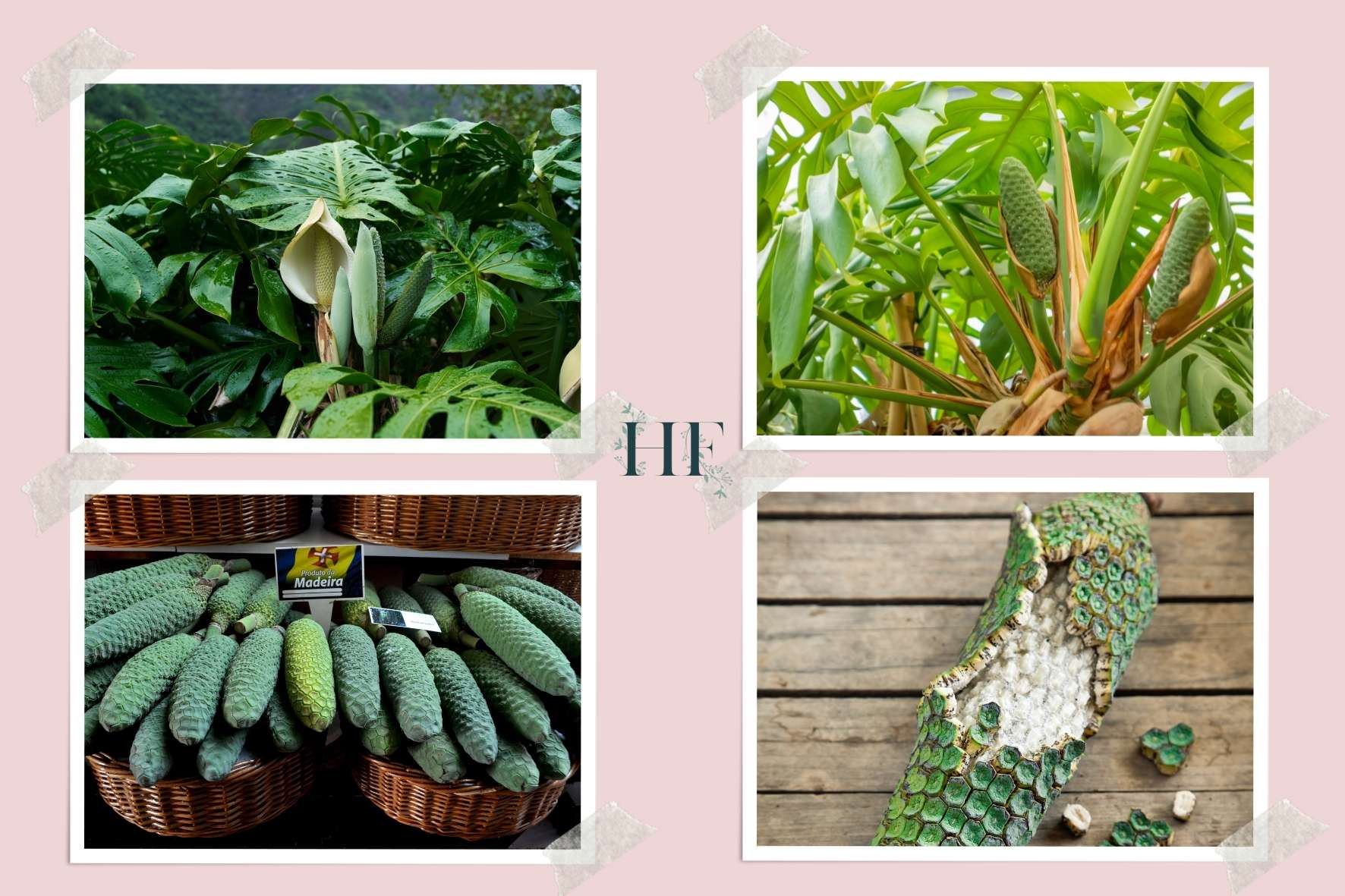
11) Monsteras Have Medicinal and Craft Uses
In Central America, the fruits are consumed as a natural laxative, and the roots are incorporated into infusions to reduce arthritic pain.
Portions of the Monstera plant are also used in China to relieve symptoms associated with fevers, coughs, and infections.
In Martinique, the root is used to make a remedy for snakebite.
The roots are also used in Central and South America to weave into rope, furniture, and baskets. In Guatemala, in particular, the roots are gathered from plants climbing up trees to make mimbre furniture, a style of weaving using natural fibres similar to how rattan is used to make wicker furniture.
The fibres create a strong structure when intricately woven that can support the weight of the human body!
In Mexico, the roots are used similarly to make baskets for food, clothing, and miscellaneous storage.
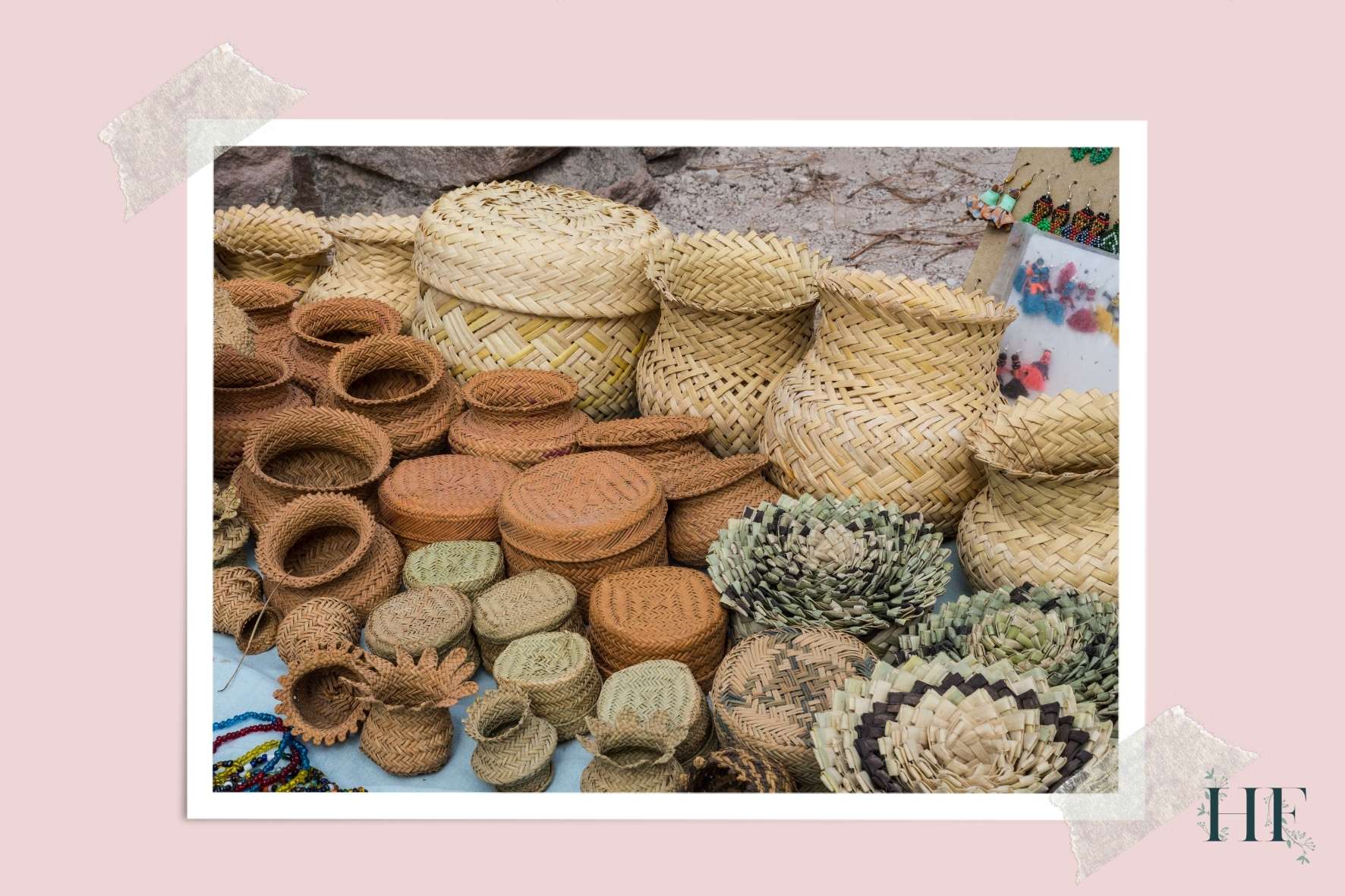
12) All Monstera Parts Are Toxic
Although the ripe fruit of Monstera Deliciosa is edible, the rest of this plant and the other 45 Monstera types are toxic to humans and pets.
All the parts of the plant, including the unripe fruit in the case of Monstera Deliciosa, contain calcium oxalate crystals, which is why they are toxic if ingested and cause irritation to the touch.
In terms of plant toxicity levels, Monstera Deliciosa is labelled as 3 or 4 out of 4 (source). Their needle-shaped crystals can irritate the skin, mouth, tongue, and throat, resulting in throat swelling, breathing difficulties, burning pain, and stomach upset.
Read also: Is Monstera Toxic to Cats, Dogs and Babies?
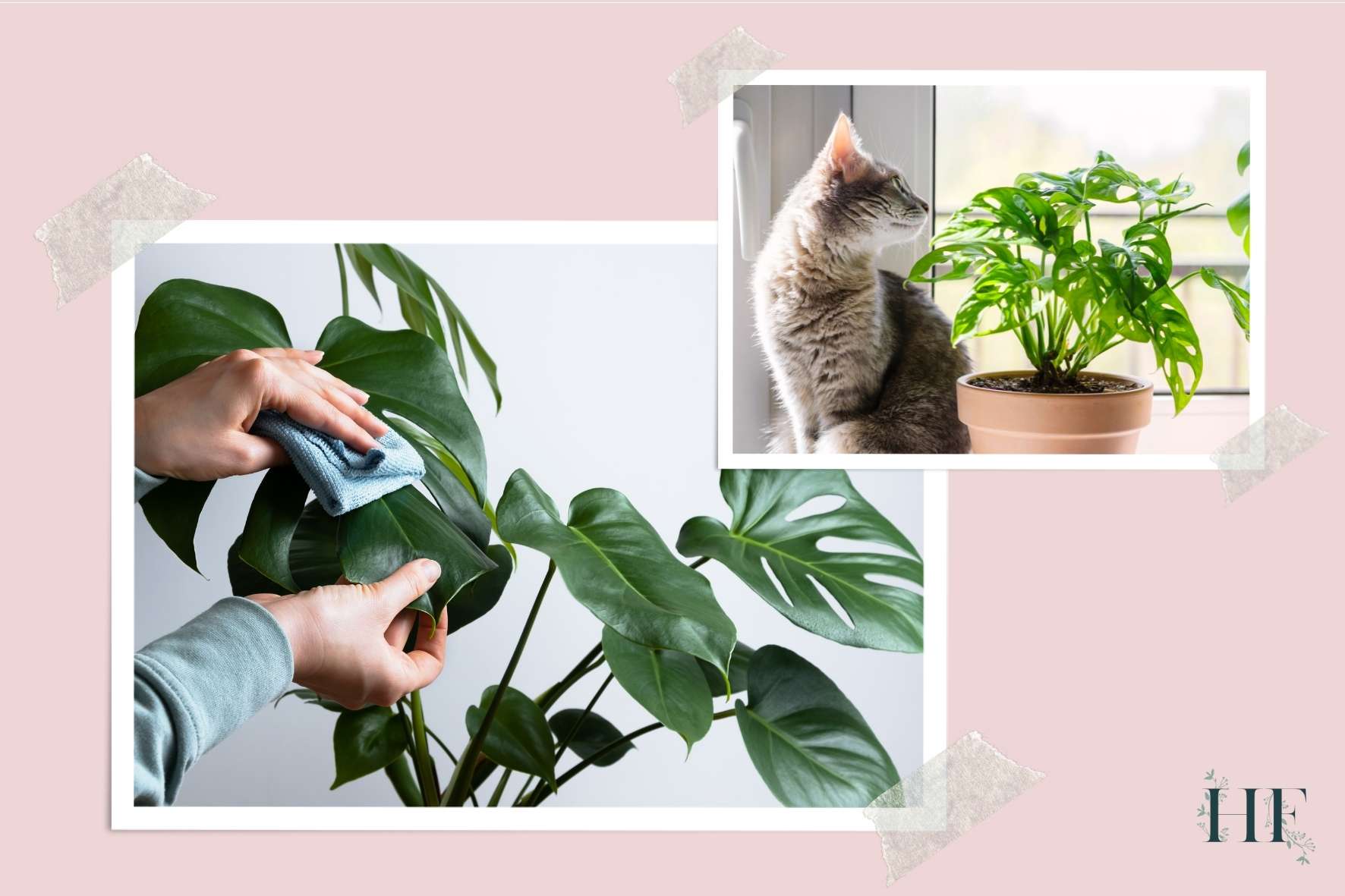
13) Monstera First Appeared in 1693 in Western Literature
The book Revision of Monstera, by Michael Madison (source), explains how in 1693, Monstera first appeared in western literature in’ an account of the vegetation of Martinique by the French botanist, Charles Plumier.
Plumier provided many illustrations of a plant he named Arum Hederaceum, Amplis Foliis Perforatis, which we currently know as Monstera Adansonii.
It wasn’t until 1763 that the name Monstera was first used by Adanson in his Familles des Plantes. In 1832, Schott renamed the same plant by the name it’s known today: Monstera Adansonii.
By 1840, Monstera had been in the European literature for 150 years, and its known range extended from the West Indies to Brazil, but only one species, M. adansonii, was recognized.
The juvenile of Monstera Dubia was in cultivation as Marcgravia Dubia but had not yet been
identified as an aroid.
In the 1840s, Monstera Deliciosa was discovered independently by Liebmann in Mexico and Warszewicz in Guatemala.
Note: Monstera adansonii var. adansonli. The illustration below it’s from Description des plantes de l’Amérique book, pl. LVI., Paris 1693, by Charles Plumbier (source).
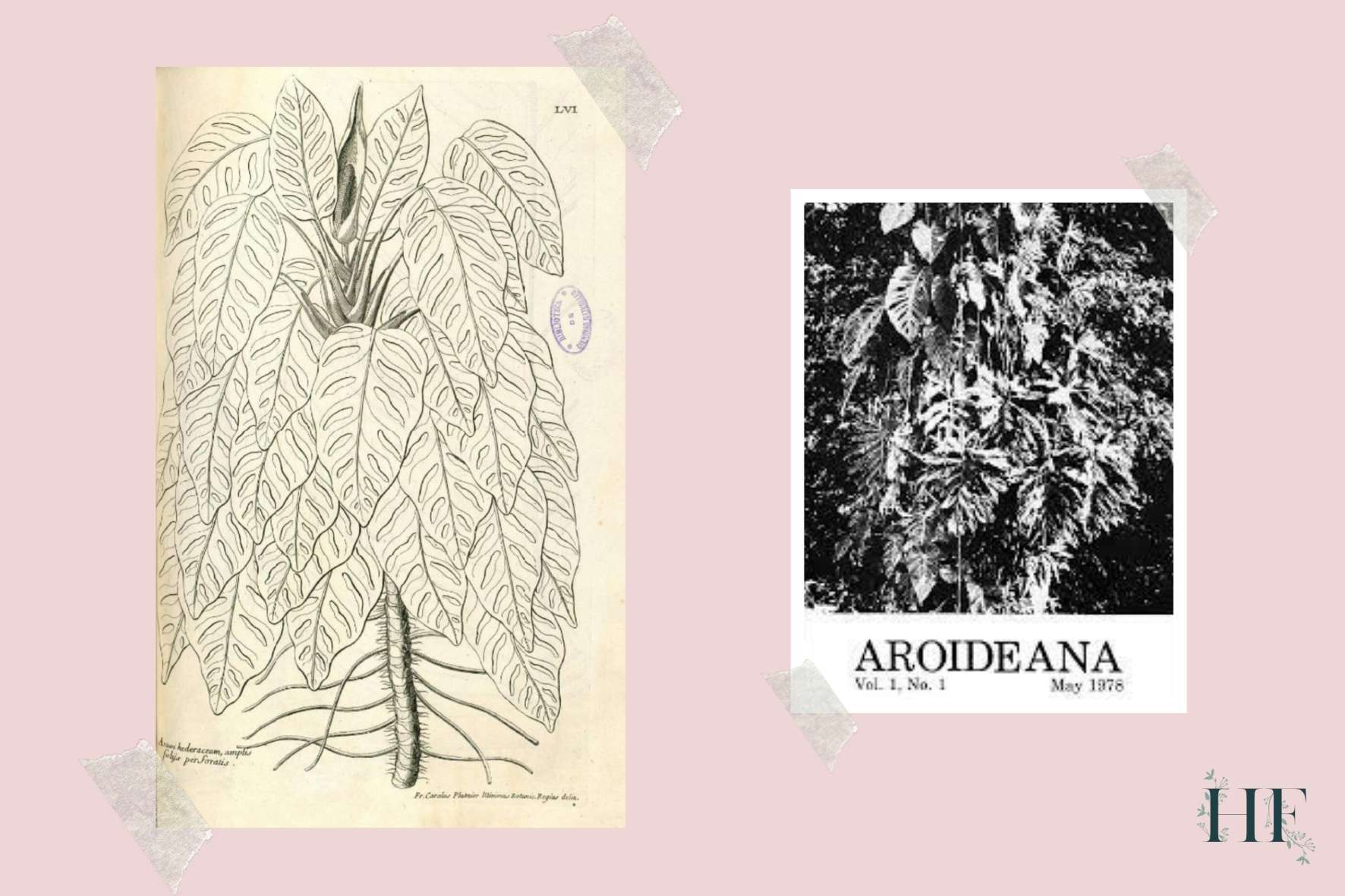
14) Monstera Deliciosa Was Cultivated in Europe After Discovery
During the 70 years following Adanson’s publication of Monstera, the West Indian species spread in cultivation to botanical gardens and conservatories throughout Europe, where it was duly noted in seed catalogues and plant lists as Dracontium pertusum L.
Monstera Deliciosa was first collected in 1832 in Mexico by Wilhelm Friedrich von Karwinsky, who sent a herbarium specimen to Munich.
It was collected again in Oaxaca, Mexico, by Frederik Michael Liebmann in 1840 and in Guatemala by Josef Ritter von Warszewicz in 1846. Both of whom sent live plants for cultivation to the Copenhagen and Berlin botanic gardens, respectively, where they were quickly propagated and distributed to other botanic gardens in Europe and European colonies in the tropics (source).
By 1858, it had already produced fruits in the Royal Botanic Gardens at Kew. Most plants cultivated worldwide descend from Liebmann and Warszewicz´s original introductions
The natural range of M. deliciosa is restricted to southern Mexico and Guatemala (source) and this species is rare in the wild and not often collected.
This could be because its sapling from seeds grows very slowly and dies off in the wild if it doesn’t find a tree before it is 20 cm long. As a houseplant, however, it grows very quick from a cutting.
Nowadays, in the U.K. Monstera Deliciosa and the cultivar, ‘Variegata,’ have gained the Royal Horticultural Society’s Award of Garden Merit.
Note: In the image below, the engraving on the left is a Monstera Deliciosa by Auguste Faguet, originally published in the journal The Garden, in 1880. On the right, Monstera Deliciosa in the wild.

15) There Are 6 Monstera Cultivars Including Variegata
There are 45 species of Monstera and 6 infraspecific names, i.e., cultivars or subspecies. One of the most known ones is Monstera Variegata.
What is a variegated Monstera?
Variegation in Monstera plants is caused by a genetic mutation that prohibits the plant’s cells from producing chlorophyll (the molecule that gives plants their green colour and captured sunlight) resulting in discolouration in the tissue (creamy-white splashes).
Some plants are naturally variegated due to their DNA like the snake plant and the prayer plant. However, this isn’t the case with all Variegated Monsteras; in some cases, it’s a chemical process.
Here are 5 of the Monstera cultivars:
- Monstera Deliciosa Variegata: Also known as ‘Albo Variegata’ this variety has patches of white or cream on its leaves. It can also have leaves that are half green and half white, giving it the monstera half moon look. This plant is caused by natural mutation.
- Monstera Deliciosa Thai Constellation: It’s named after splotches of creamy white that resemble a stary sky. The plant was first produced via tissue culture by a lab in Thailand, hence its name.
- Monstera Deliciosa Albo Borsigiana: The ‘Borsigana’ is actually a subspecies of Monstera Deliciosa. The ‘Albo Borsigiana’ is the variegated form of the ‘Borsigiana.’ Its leaves are a bit smaller than other variegated varieties of Monstera Deliciosa. Its leaves are dark green with patches of white.
- Monstera Deliciosa Aurea (or Marmorata): It has a colour combination of dark green and yellow. Like the ‘Albo’ varieties, the yellow variegations can occur on small patches of tissue or on half of the leaf.
- Mint Monstera: Instead of white, cream, or yellow variegations, it has light mint green colouring mixed in with the Monstera’s traditional dark green.
Read also: What Is a Variegated Monstera? Why Is It So Expensive?
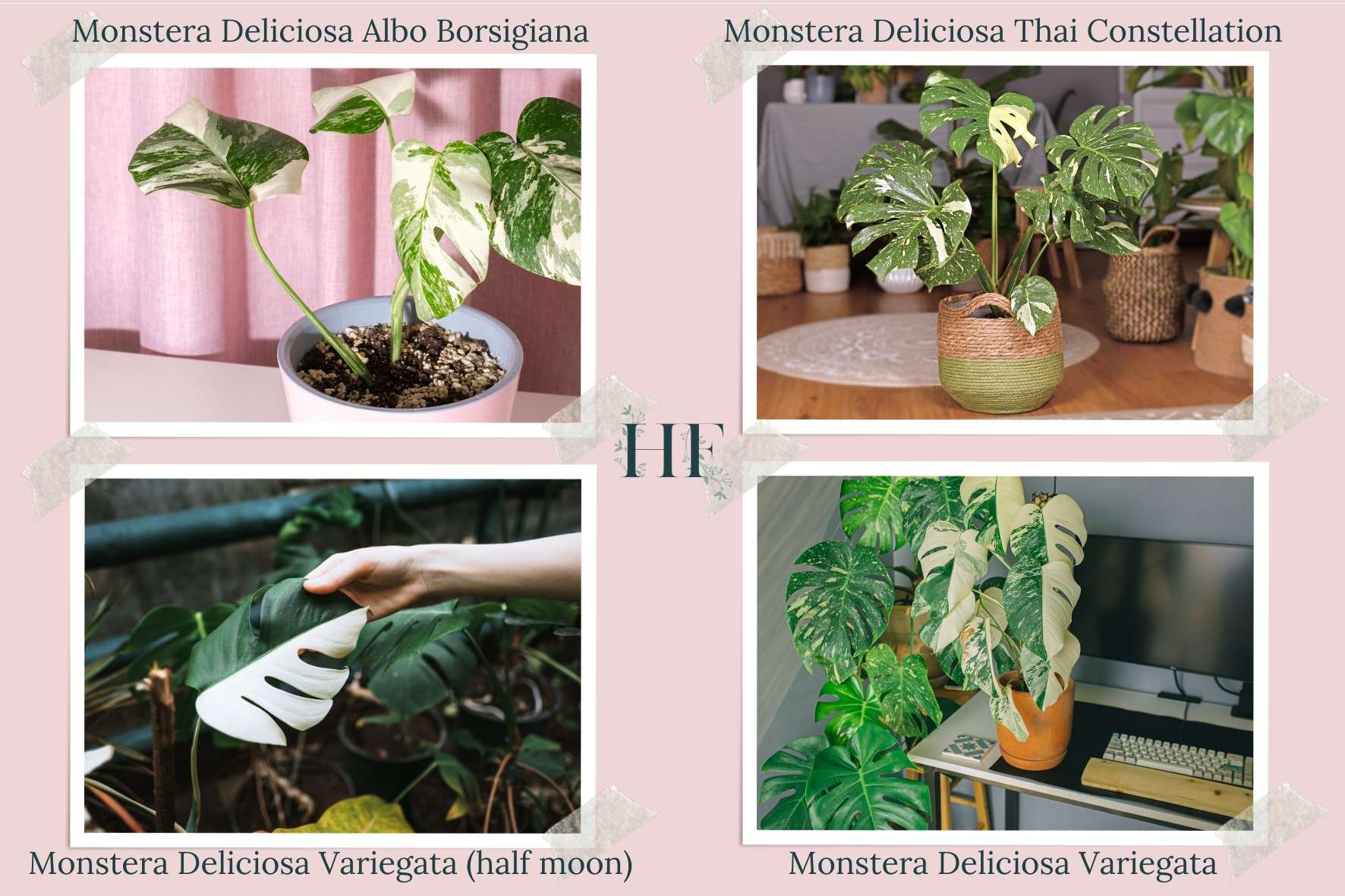
Do you know any other Monstera Deliciosa facts? Or did you just find something interesting? Tell me in the comments below! 😉

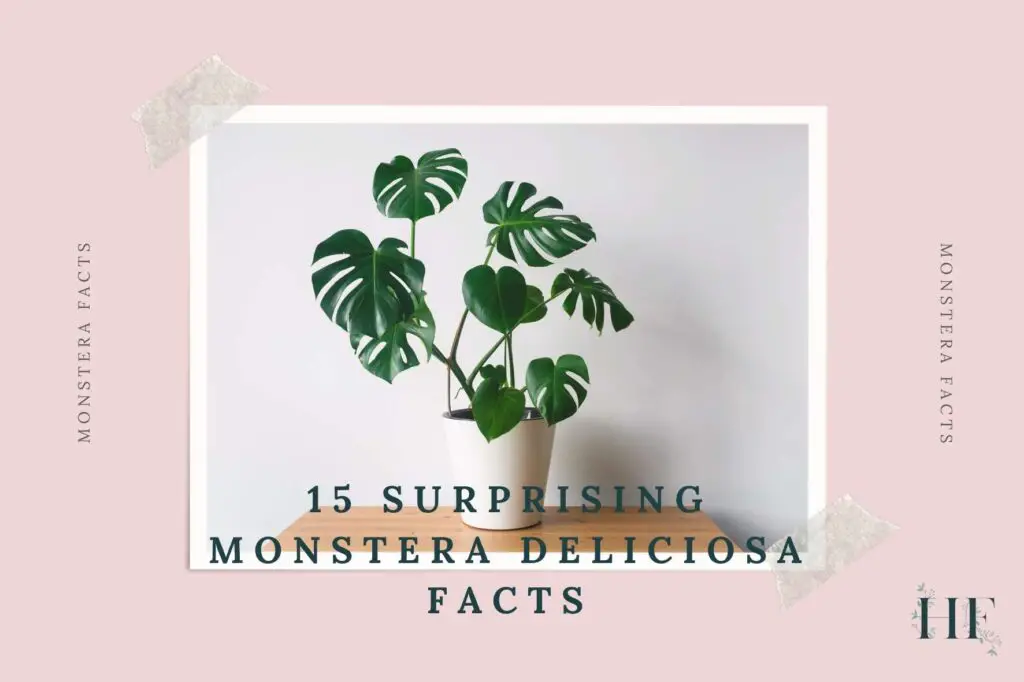
good info, i never knew so much about Monsteras.